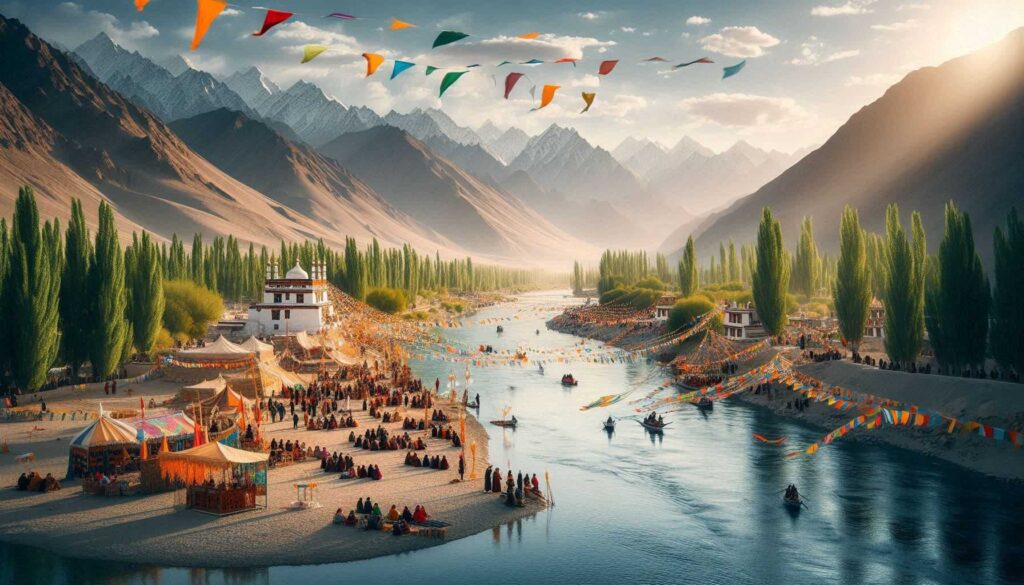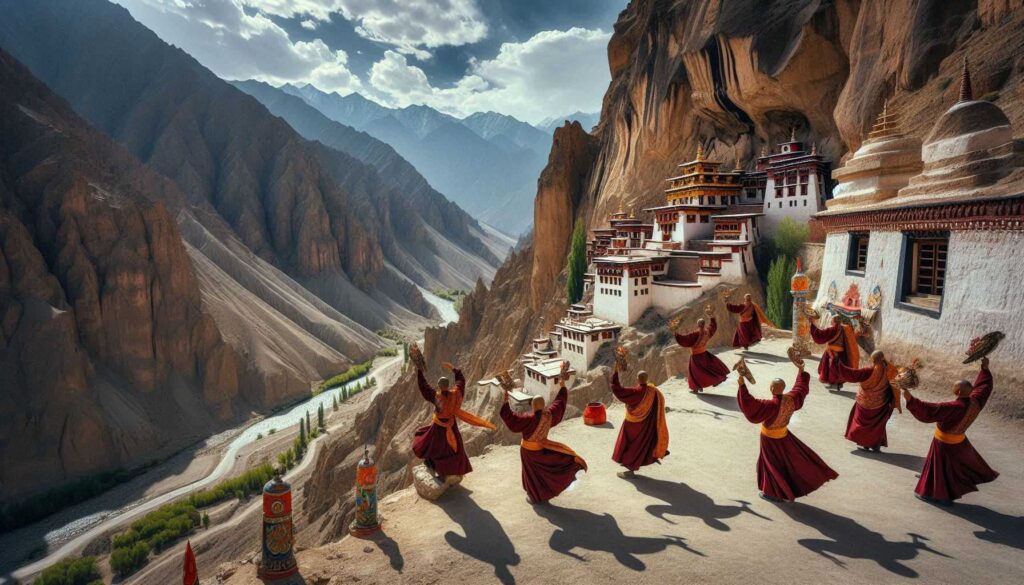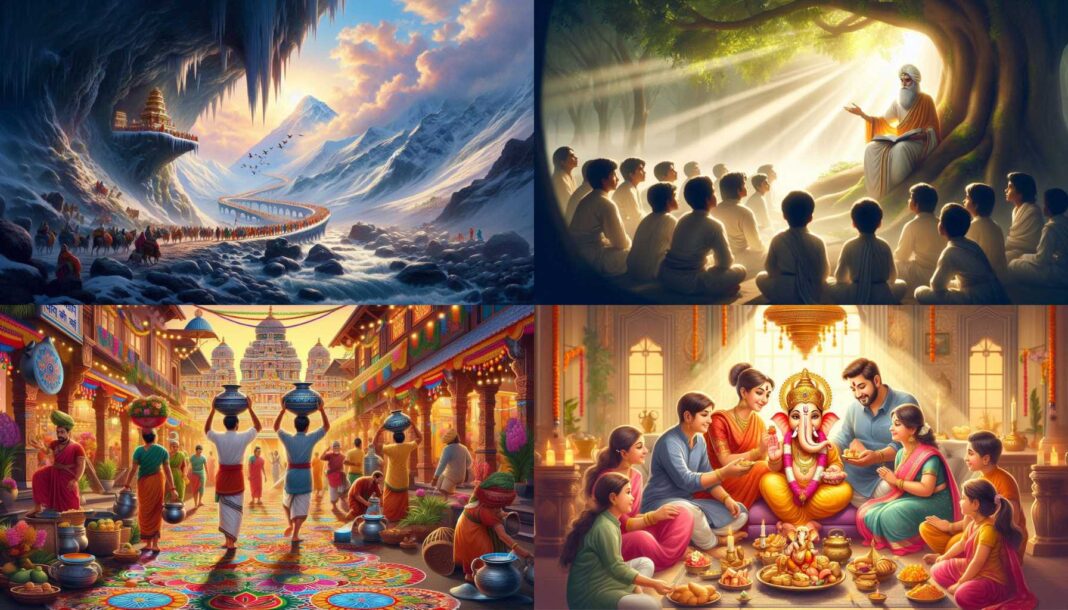Festivals in Jammu and Kashmir in June 2025: Rituals, Traditions, and Celebrations
Jammu and Kashmir, with its rich cultural heritage, celebrates numerous festivals with vibrant rituals and customs. Each festival embodies elements of the region’s diverse religions and traditions, drawing locals and visitors alike. Here’s an in-depth guide to June festivals celebrated in Jammu and Kashmir, including Hemis Festival, Mela Kheer Bhawani
Read More About Hindu Philosophy
Hemis Festival: Honoring Guru Padmasambhava

Date: Expected in mid-June 2025
The Hemis Festival is a two-day event celebrated in the Hemis Monastery near Leh, honoring Guru Padmasambhava, the founder of Tibetan Buddhism. A highlight of the festival is the Cham dance, a traditional masked dance performed by monks to celebrate Guru Padmasambhava’s spiritual accomplishments and offer blessings to onlookers. The dance, with intricately decorated masks and costumes, tells stories from Tibetan Buddhist lore, promoting harmony and dispelling negativity.
This vibrant festival is a blend of rituals, music, and chanting of sacred mantras, with devotees dressed in traditional attire and adorned in jewelry. The festival attracts locals and tourists alike who are keen to witness the spiritually enriching ceremonies, partake in traditional food offerings, and experience the artistry displayed in the masked dances.
Rituals and Significance
- Cham Dance: A spiritual dance by monks wearing elaborate costumes and masks.
- Mantras and Prayer Offerings: Offerings to Guru Padmasambhava and recitation of sacred chants.
- Thangka Display: Large thangka (a traditional Tibetan painting) displays depicting Buddha’s life and teachings.
Mela Kheer Bhawani: Celebrating the Divine Feminine

Date: Likely in early June 2025
One of the most significant festivals for Kashmiri Pandits, Mela Kheer Bhawani is dedicated to the goddess Ragnya Devi. This festival takes place at the Kheer Bhawani temple in Tulmulla, Ganderbal. Devotees offer milk, rice pudding (kheer), and flowers to the deity in a beautiful, serene setting. It is believed that the color of the spring at the temple signifies the goddess’s mood, with a darker hue indicating unfavorable times.
During the festival, thousands of devotees gather to pay their respects, perform rituals, and engage in communal prayers. The atmosphere is filled with devotion, as hymns and bhajans (devotional songs) resonate through the temple grounds.
Rituals and Significance
- Offering of Kheer: Devotees offer rice pudding as a symbol of purity.
- Color of the Spring: Observing the water’s color in the temple’s spring as a divine sign.
- Community Feasts: Sharing meals as a form of communal bonding and spiritual offering.
Yuru Kabgyat

Date: Early June 2025
The Yuru Kabgyat Festival is a two-day Buddhist festival celebrated at the Lamayuru Monastery in the Ladakh region of Jammu and Kashmir. Traditionally observed in June or July, it centers around Tibetan Buddhist rituals aimed at promoting peace, dispelling negativity, and seeking protection from malevolent forces. The festival is best known for the Cham dance—a form of sacred masked dance performed by monks, where they don colorful costumes and intricately designed masks representing deities and protective figures from Buddhist mythology.
Key Highlights and Rituals
- Cham Dance: This is a significant ritual where monks perform dances embodying various deities. These dances are believed to ward off evil spirits and bring blessings to attendees.
- Offerings and Prayers: Monks and devotees engage in rituals that include the chanting of mantras, prayer offerings, and burning of incense to purify the environment.
- Thangka Displays: Sacred paintings, or Thangkas, depicting deities and protective spirits are often displayed, serving as a visual focal point for meditation and reflection.
Symbolism and Cultural Significance
The Yuru Kabgyat Festival holds deep significance, as it symbolizes the triumph of good over evil, protection from harm, and the maintenance of harmony in the region. This festival is a gathering of faith where monks, locals, and tourists alike come to celebrate and witness the rich traditions of Tibetan Buddhism, adding a unique cultural depth to the Ladakh region.


